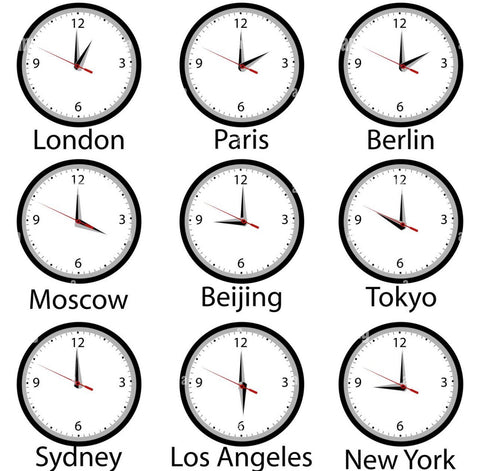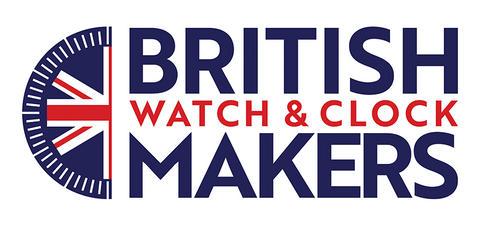
The GMT Watch - a little background
The History and Development of the GMT Wristwatch
Origins and Early Development (1950s)
The GMT wristwatch emerged from a very specific need in the mid-1950s aviation industry. Pan Am airlines approached Rolex about creating a watch that pilots could use on long-haul flights to simultaneously track multiple time zones. This practical challenge led to one of horology's most enduring complications.
Rolex introduced the GMT-Master reference 6542 in 1954, creating a timepiece equipped to display two time zones simultaneously. This design need yielded one of history's most iconic timepieces, launching in 1955 when people were beginning to move around the world faster than ever before.
Technical Innovation
The GMT function works through a fourth hand (the GMT hand) that makes one complete rotation every 24 hours, paired with a bidirectional rotating 24-hour bezel. This allows wearers to track multiple time zones simultaneously - a revolutionary advancement for its time. The original GMT-Master measured 38mm in diameter with a highly legible dial designed specifically for aviation professionals.
Cultural and Historical Significance
The GMT watch quickly transcended its aviation origins to become a symbol of global connectivity. Four years after launch, the GMT-Master participated in Pan Am's first non-stop flight between New York and Moscow, reinforcing its image as a watch connecting people across continents.
Evolution and Technological Advancement
Over the decades, GMT watches have undergone significant technical improvements. Rolex upgraded to the higher-beat Caliber 1575 in the mid-1960s, and introduced ceramic bezel inserts in 2007. Other manufacturers embraced the concept: Tudor launched their first GMT with the Aeronaut in 2007, while Omega integrated GMT complications into their Seamaster and Speedmaster lines.
Modern GMT Variations
Today's GMT watches come in different configurations. The "caller" GMT setup allows users to easily track home time while adjusting the local time, making it ideal for frequent travelers who need to stay connected to their base timezone. The "traveler" GMT configuration offers different functionality, allowing the GMT hand to be independently adjusted. Premium brands like Rolex, Tudor, and Omega typically employ the traveler setup, while the caller design offers excellent practical utility.
Wagstaff Watches' GMT: Answering Customer Demand
Wagstaff Watches' decision to develop a GMT represents both a return to company heritage and a direct response to customer enthusiasm. Throughout recent years, many of our most intrepid customers - world travelers, adventure photographers, and global business professionals - have consistently requested that we bring out a GMT version of our flagship models.
This demand particularly resonated because Wagstaff produced a highly regarded dual time zone watch back in the 1980s, which developed a loyal following among travelers who valued having a reliable Wagstaff timepiece accompany them on journeys around the globe. Those customers, many of whom still treasure their vintage Wagstaff dual-time pieces, have been asking us to revive this capability in a modern format.
Why the Wagstaff GMT Makes Perfect Sense:
Heritage and Continuity: Building on our 1980s dual time zone legacy, the new GMT allows longtime Wagstaff enthusiasts to continue their global adventures with an updated version of the functionality they've long appreciated.
Proven Customer Demand: The GMT represents one of the most requested complications from our customer base, particularly those who refuse to travel without their trusted Wagstaff on their wrist.
Technical Excellence: Wagstaff chose the caller GMT configuration for this model specifically because our customers indicated this was their preferred functionality - they wanted to easily track home time while adjusting local time during their travels. Additionally, the fixed bezel design creates a more explorer-focused aesthetic that aligns perfectly with Wagstaff's adventure-oriented design philosophy, distinguishing it from the busier appearance of rotating bezel GMTs. This customer-driven decision ensures the watch delivers exactly the utility and visual appeal our adventurous clientele requested, though we may consider developing a full traveler GMT in future releases.
Global Lifestyle: The caller GMT's dual time zone capability perfectly serves the interconnected world of the adventurous spirits who choose Wagstaff for their worldly pursuits.
The GMT watch embodies the spirit of exploration and global connectivity that has defined modern travel. By developing our own GMT, Wagstaff Watches honors both our heritage and our customers' wanderlust, ensuring that wherever their adventures take them around the world, they can rely on their Wagstaff to keep them connected to home while embracing the journey ahead.










Comments (0)
There are no comments for this article. Be the first one to leave a message!